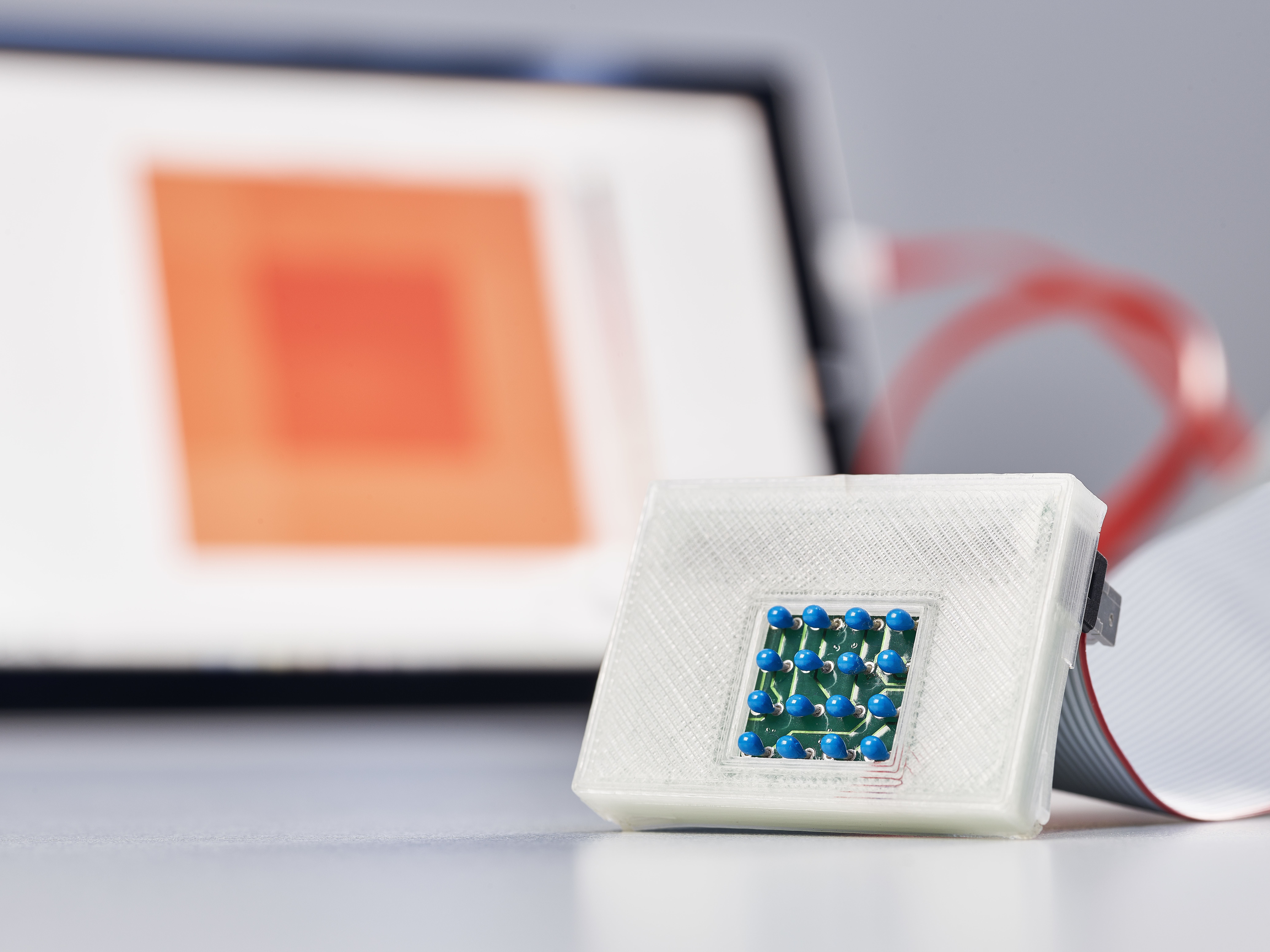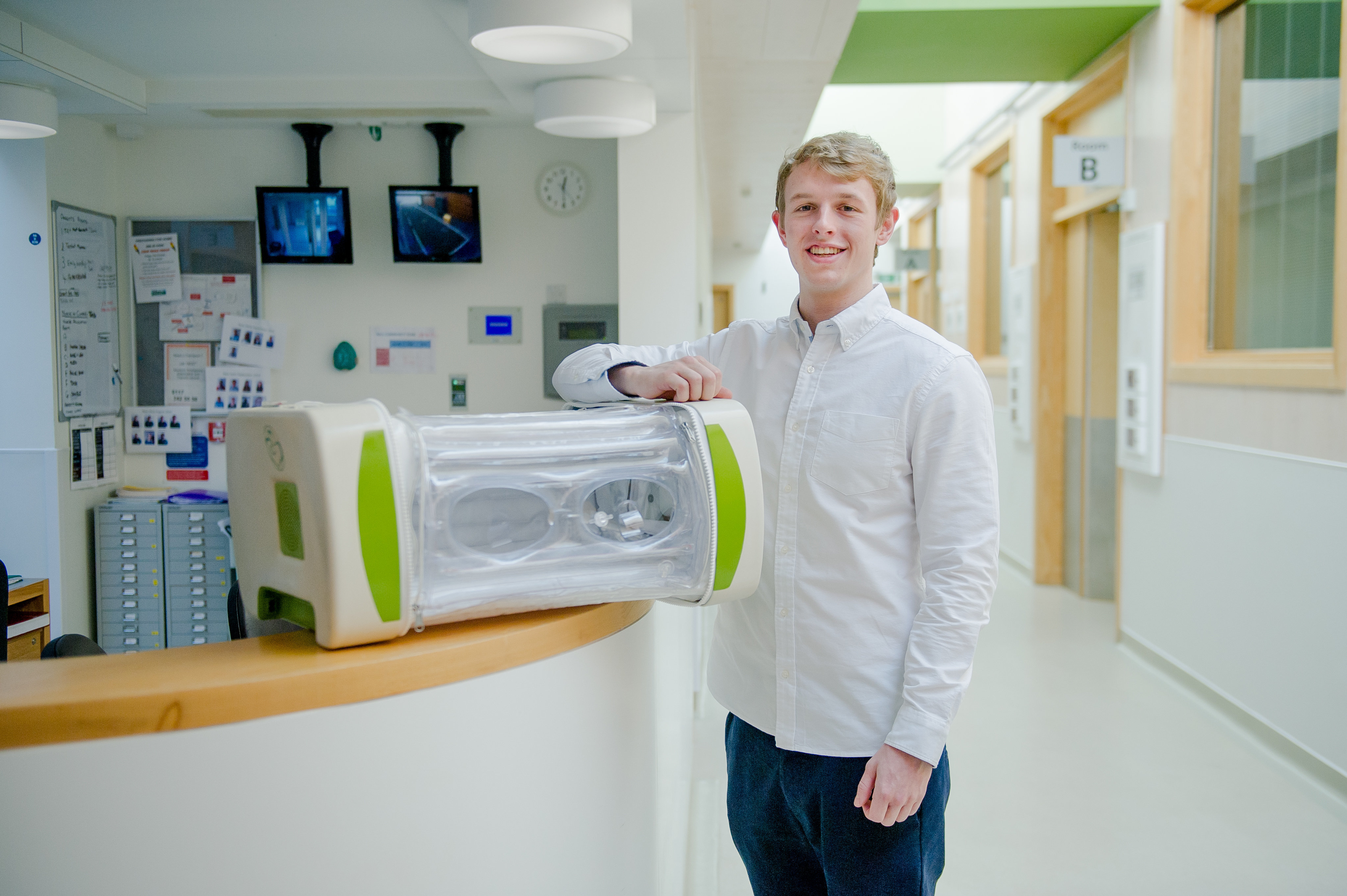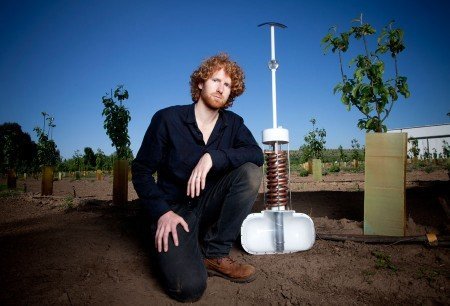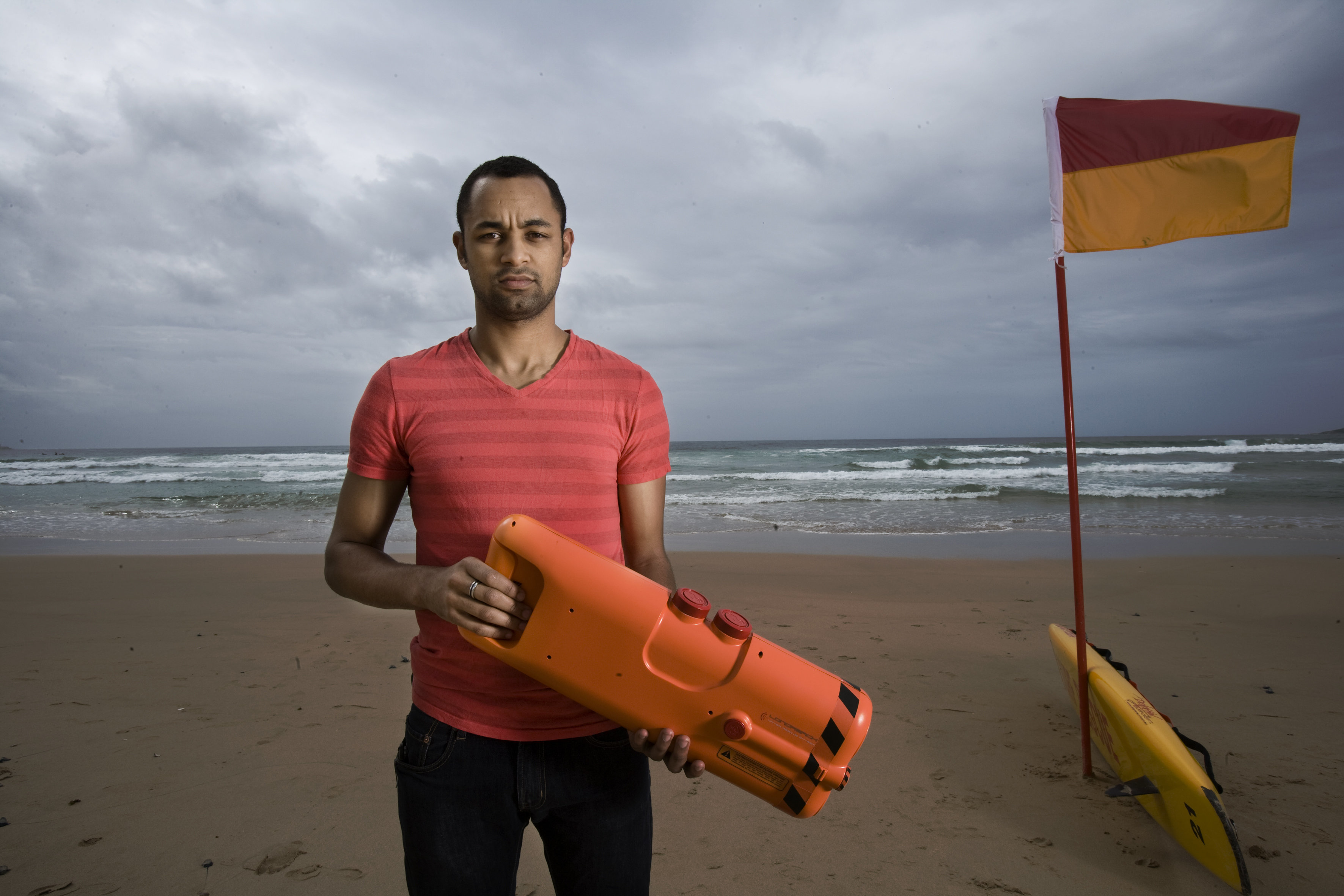A remarkable device that can detect skin cancer reliably yet costs a fraction of its rivals has won the International James Dyson Award.
The sKan was created by a team of four electrical and biomedical engineering students from McMasters University and can detect a melanoma by sensing minute changes in temperature on the skin.

Michael Takla, Rotimi Fadiya, Shivad Bhavsar and Prateek Mathur were inspired to create the device after they saw the statistics around skin cancer.
“Melanoma has one of the highest survivability’s of all cancers, 94%,” explains Fadiya. “So it’s absolutely crazy that so many people still die even though we know how to cure it.”
While equipment exists that can test for skin cancer, the team found there were prohibitive costs involved that were preventing quick and early diagnoses from taking place.
“With these advanced technologies, the cost just keeps creeping up and up and up,” explains Mathur. “We found one competitor that had a device that was over $250,000 which is just not obtainable for what we’re trying to do.”
Mathur and the rest of the team were able to bring the cost of their device down to just $1000, while still maintaining the same levels of accuracy and reliability that doctors would expect.

How does sKan work?
An easy way to detect if there is a melanoma is to cool the skin and then measure the rate at which it returns to room temperature.
If a melanoma is present, the skin will heat up much quicker. An easy way to record this is to create a thermal map of the surrounding skin that a doctor can easily see on a display.
Now there are devices out there that can already do this. However the vast majority of them suffer from one major problem. “The issue was that they all use high-end ultra-expensive cameras.” explains Shivat.
That’s where the sKan comes in.

Rather than using expensive thermal imaging, sKan uses a grid of small thermistors which turn electrical signals into thermal readings.
The thermistors themselves are a cheap off-the-shelf component, yet can still detect the minuscule temperature changes needed to make an accurate diagnosis.

The readings are then translated into a heat map which can be read by any GP using a piece of software that the students designed and wrote themselves.
Why is sKan such a breakthrough?
Availability. It’s as simple as that.
Most of today’s devices that can detect skin cancer cost anywhere from $10,000-$250,000, putting them completely out of reach for most GPs.
At $1,000, sKan can provide the same second-source diagnosis for GPs but at a fraction of the cost.

The team envisage their prototype being used by GPs as a quick, and reliable tool that can allow someone to walk in, voice their concerns and then be diagnosed quickly and efficiently.
“The doctors office for the most part looks the same as it did 10 years ago,” explains Rotima. “It’s a fine balance to find tools that physicians could use while still remaining affordable.”
What’s next for the sKan?
The team have won the 2017 International Dyson Award which means that not only do they get a cash prize of £30,000 (plus £5,000 for their university), but they also get the kudos and recognition that comes with it.

Using the publicity and reputation boost of the Dyson Award, the team are hoping to take sKan to pre-clinical trials.
To do that they’ll need to create a slicker, more professional-looking prototype. The team are already hard at work miniaturising the device by using smaller, yet more accurate thermistors. They hope to have the next version ready within 6-8 months.
For the moment though, the team of students are just soaking it all in.
Previous Winners Of The James Dyson Award:
2016 – EcoHelmet
Its designer Isis Shiffer created the helmet after using bike-sharing schemes around the world and realising that there was no easy, cheap access to safety equipment.
According to the Department of Transport, there were more than 3,200 serious injuries to cyclists on the roads in 2015.Ms Shiffer’s hope is to sell them alongside the bike sharing stations – like those found in London – for around £4 per helmet.
2015 – Voltera

Considering the shortage of engineers in the UK (and the world), having a hurdle like this is unacceptable and it’s something that four students from the University of Waterloo, Canada set to overcome.
Voltera is the result of that. It’s a laptop-sized PCB printer that can turn design files into prototype printed circuit boards in just minutes. No more delays, no more unnecessary costs, now an inventor can create a circuit on their laptop and have it printed and ready to go within the hour.
2014 – MOM

Roberts’ design is a response to shocking statistics from the WHO that 75 per cent of deaths resulting from premature birth could be avoided if inexpensive treatments were more readily available in the developing world.
Modern incubators can cost upwards of £30,000 making them hugely expensive to both buy, and then distribute. Roberts’ new design costs just £250 and is fully portable.
2013 – Titan Arm

2012 – SafetyNet

2011 – Airdrop

2010 – Longreach Buoyancy Deployment System

2009 – Automotist

2008 – Reactiv

2007 – Senjo
